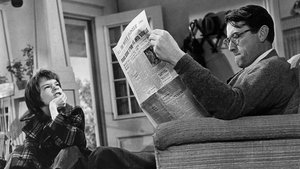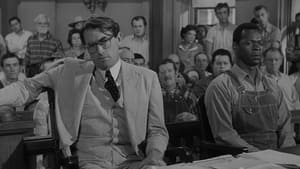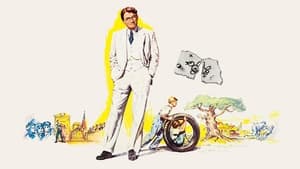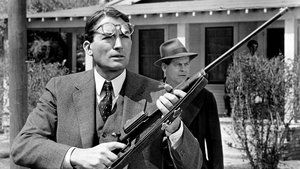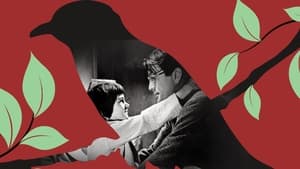Contact: [email protected]
Video Sources 0 Views

To Kill a Mockingbird Colorized 1962: Best Timeless Classic in Vivid Color
Synopsis
[ez-toc]




Introduction
In the realm of classic films, certain titles stand as timeless masterpieces, etching their mark on cinematic history. “To Kill a Mockingbird Colorized,” a poignant adaptation of Harper Lee’s novel, is undeniably one such gem. Released in 1962 and directed by Robert Mulligan, the film has long been celebrated for its powerful narrative, exceptional performances, and exploration of racial prejudice in the Depression-era South. Now, with the advent of advanced colorization technology, “To Kill a Mockingbird” takes on a new hue, providing audiences with a fresh perspective on this cinematic classic.
Read Media File Transfer Agreement: Terms and Conditions
Read FAQ
Bringing an Old Masterpiece to Life: The Colorization of “To Kill a Mockingbird Colorized”
The decision to apply colorization to old movies is always met with a mix of anticipation and skepticism. For “To Kill a Mockingbird Colorized 1962,” the endeavor was to breathe new life into a film that already held a revered place in cinematic history. The use of advanced colorization technology aimed not to overshadow the original black-and-white version but to enhance the visual experience for a modern audience.
Understanding the Process: How Colorization Technology Works
Colorization involves a meticulous process where digital artists add color to each frame of the original black-and-white film. The goal is to create a natural and vibrant palette that complements the director’s original vision. This technique requires a delicate balance, ensuring that the essence of the film remains intact while introducing a richness of color that aligns with contemporary viewing preferences.
The advancements in colorization technology have come a long way from the early attempts that often resulted in artificial and garish hues. Today, the process involves extensive research into the time and setting of the film, ensuring that the colors chosen are historically accurate. This attention to detail is crucial in preserving the authenticity of the original work.
Pros and Cons of Colorizing Classic Films
While colorization technology has the potential to enhance the viewing experience, it comes with its own set of considerations. Purists argue that tampering with a classic film alters the director’s intended artistic vision. However, proponents of colorization argue that it can make old movies more accessible to younger audiences who may find black-and-white films less engaging.
The debate surrounding colorization raises questions about the preservation of cinematic heritage. Should classic films be presented in their original form to maintain historical accuracy, or is the adaptation necessary to keep them relevant to contemporary viewers? “To Kill a Mockingbird Colorized 1962” finds itself at the center of this discourse, inviting audiences to weigh the pros and cons of this controversial cinematic technique.
A Cinematic Journey through “To Kill a Mockingbird Colorized”
Exploring the Story and Characters of “To Kill a Mockingbird Colorized”
“To Kill a Mockingbird Colorized” unfolds in the fictional town of Maycomb, Alabama, during the 1930s. The narrative revolves around the Finch family, particularly Atticus Finch (played by the iconic Gregory Peck), a lawyer tasked with defending Tom Robinson, a black man wrongly accused of raping a white woman. The story is narrated through the eyes of Scout Finch (Mary Badham), Atticus’s daughter, providing a unique perspective on racial prejudice and injustice.
The character dynamics in “To Kill a Mockingbird Colorized” are integral to its impact. Scout’s brother, Jem (Phillip Alford), adds another layer to the narrative, and their mysterious neighbor Boo Radley becomes a symbol of societal misconceptions. The film masterfully explores the intricacies of morality, empathy, and the harsh realities of racial tension in the Deep South.
Key Scenes that Define the Film
Certain scenes in “To Kill a Mockingbird Colorized” have become indelible moments in cinematic history. The courtroom drama, where Atticus defends Tom Robinson, stands out as a powerful portrayal of racial injustice. The children’s encounters with Boo Radley contribute a sense of mystery and a poignant commentary on societal judgments. Each scene serves as a brushstroke, creating a canvas that captures the essence of Lee’s novel and Mulligan’s directorial vision.
The Making of a Masterpiece: The 1962 Adaptation of Harper Lee’s Novel
Director Robert Mulligan’s Vision for Bringing the Novel to the Big Screen
Robert Mulligan, the visionary director behind “To Kill a Mockingbird Colorized,” faced the daunting task of translating Harper Lee’s literary masterpiece to the cinematic medium. Mulligan’s approach was characterized by a commitment to authenticity and a deep understanding of the social issues embedded in the narrative. His decision to maintain a close alignment with the source material contributed to the film’s resonance with audiences.
Casting the Perfect Atticus: The Iconic Performance of Gregory Peck
Central to the film’s success was the casting of Gregory Peck as Atticus Finch. Peck’s portrayal earned him an Academy Award for Best Actor, solidifying his place in cinematic history. His dignified and empathetic performance added a layer of humanity to Atticus, making him an enduring symbol of moral integrity. Mary Badham and Phillip Alford, as Scout and Jem respectively, delivered performances that resonated with authenticity, capturing the essence of childhood curiosity and innocence.
Reception and Legacy: From Academy Awards to Cultural Impact
The Film’s Release and Its Immediate Reception
Upon its release in 1962, “To Kill a Mockingbird Colorized” received widespread acclaim for its powerful storytelling and social commentary. The film’s exploration of racial injustice struck a chord with audiences, and its critical success translated into commercial popularity. The Academy Awards honored the film with three wins, including Best Actor for Gregory Peck, and nominations in multiple categories.
Examining the Film’s Enduring Legacy and Influence
Beyond its accolades, “To Kill a Mockingbird Colorized” has left an indelible mark on popular culture. Its themes of racial prejudice, morality, and empathy remain relevant, ensuring the film’s continued resonance across generations. The Library of Congress has recognized its cultural significance, preserving the film for future audiences. “To Kill a Mockingbird Colorized” stands as a testament to the power of storytelling to address societal issues and provoke meaningful conversations.
Recognition and Awards: Honors Received by the Film
The film’s impact is evident in the numerous awards and honors it has garnered over the years. Gregory Peck’s portrayal of Atticus Finch not only earned him an Oscar but also secured his place as one of the most iconic characters in film history. The film’s success at the Academy Awards solidified its status as a cinematic masterpiece, with Robert Mulligan’s direction and the performances of the cast receiving well-deserved acclaim.
Preserving a Masterpiece: “To Kill a Mockingbird Colorized” in Color and Black-and-White
The decision to colorize “To Kill a Mockingbird Colorized” brings forth questions about the preservation of classic films. The original black-and-white version holds a special place in film history, capturing the aesthetic of its time. However, the colorized adaptation allows a new audience to experience the narrative with a fresh perspective.
The Significance of “To Kill a Mockingbird Colorized” in the Context of Film History
“To Kill a Mockingbird Colorized” is more than a film; it is a cultural artifact that reflects the societal values and challenges of its era. The black-and-white version serves as a time capsule, preserving the visual language of the 1960s. The colorized adaptation, while introducing modern aesthetics, opens the door for a broader audience to engage with the film’s themes and messages.
Discussion on the Black-and-White Original versus the Colorized Version
Purists may argue that the original black-and-white version provides a more authentic experience, maintaining the director’s intended vision. However, the colorized adaptation offers a different lens through which to appreciate the film’s narrative depth. The vibrancy of color can enhance emotional engagement, making the characters and settings more vivid for contemporary viewers.
Experiencing “To Kill a Mockingbird” Today: Why It Remains Essential Viewing
The Relevance of Its Themes in the Modern World
“To Kill a Mockingbird” continues to be essential viewing not only for its historical significance but also for its enduring themes. The exploration of racial prejudice, the pursuit of justice, and the moral complexities depicted in the film resonate with contemporary societal issues. The lessons embedded in the narrative serve as a reminder of the ongoing struggle for equality and empathy.
Where to Watch: Availability of the Film in Different Formats
The availability of “To Kill a Mockingbird” in both its original black-and-white form and the colorized version offers audiences the opportunity to choose the viewing experience that resonates with them. Streaming platforms and home entertainment options provide accessibility, ensuring that this cinematic masterpiece remains within reach for generations to come.
In Living Color: The Controversy and Artistry of Colorizing Classic Movies
Examining the Debate Surrounding the Colorization of Old Films
The colorization of old movies has sparked debates within the film community and among audiences. While some argue that it modernizes and revitalizes classic films for new generations, others contend that it diminishes the artistic integrity of the original work. “To Kill a Mockingbird Colorized 1962” contributes to this ongoing conversation, prompting viewers to reflect on the balance between preservation and adaptation in the realm of classic cinema.
The Timelessness of a Classic: “To Kill a Mockingbird” Transcends Its Visual Presentation
Appreciating the Film’s Merits Beyond Its Aesthetic Qualities
“To Kill a Mockingbird Colorized 1962” invites audiences to appreciate the film’s merits beyond its visual presentation. While the colorization adds a layer of vibrancy, the heart of the film lies in its compelling narrative, well-defined characters, and exploration of complex societal issues. Whether experienced in black-and-white or color, the enduring impact of “To Kill a Mockingbird” transcends its visual form, cementing its place as a timeless classic.
In conclusion, the colorization of “To Kill a Mockingbird” serves as a fascinating exploration of how technology can breathe new life into old masterpieces. The film’s timeless themes, powerful performances, and cultural significance ensure its place in the pantheon of cinematic classics, whether viewed in its original black-and-white format or through the lens of modern colorization. As audiences continue to engage with this iconic narrative, “To Kill a Mockingbird” remains a testament to the enduring power of storytelling and the evolution of cinematic artistry.
